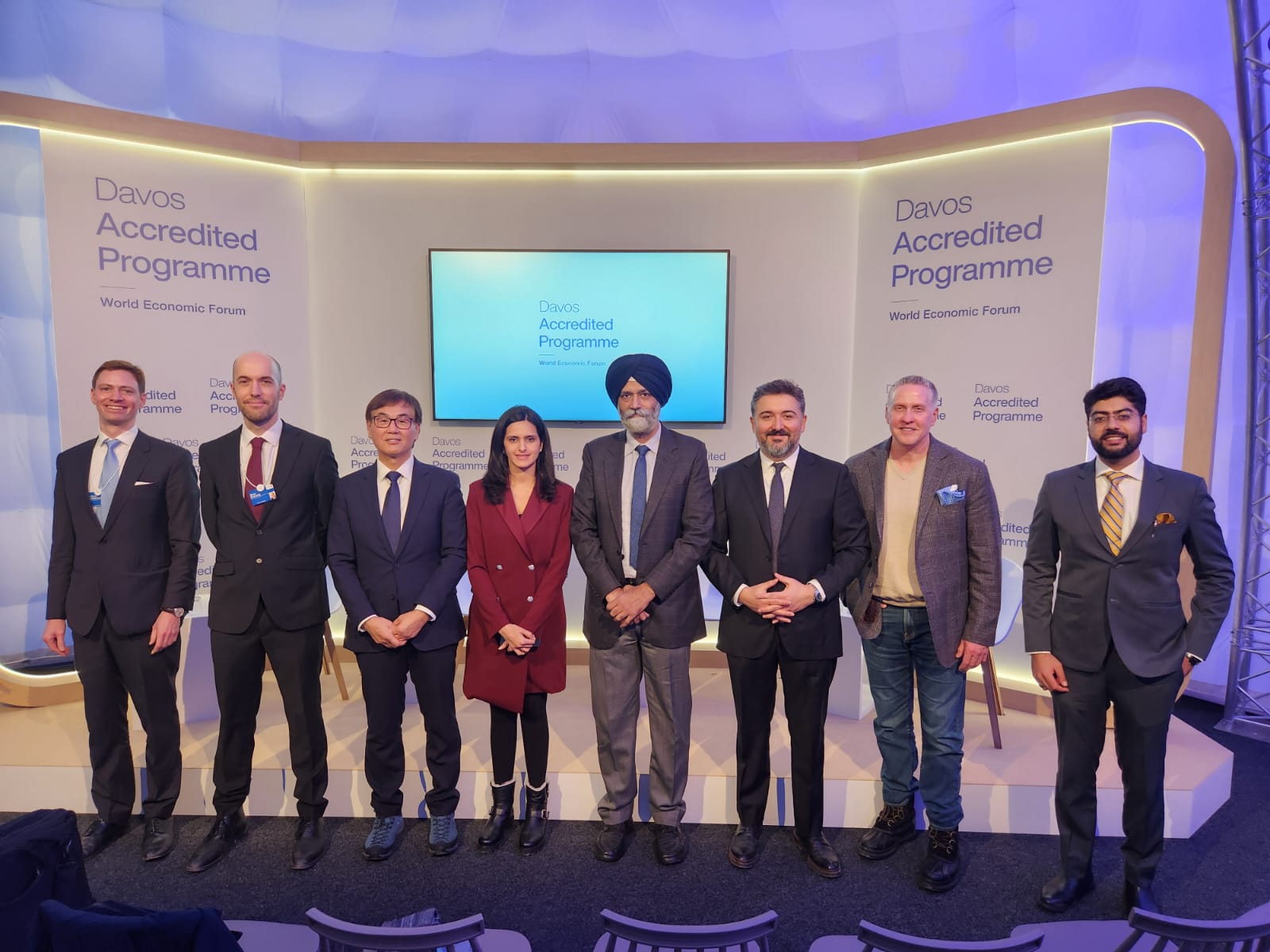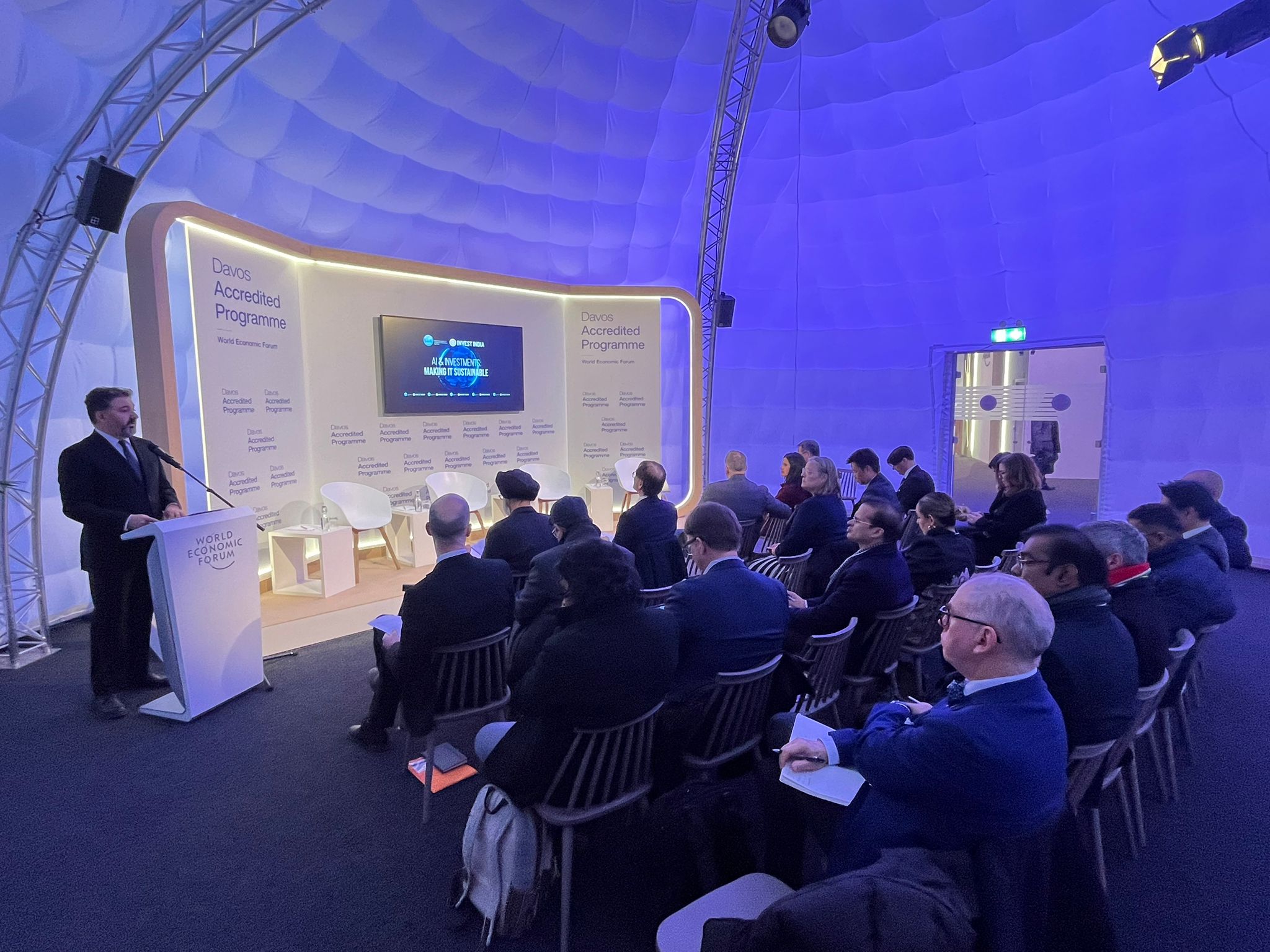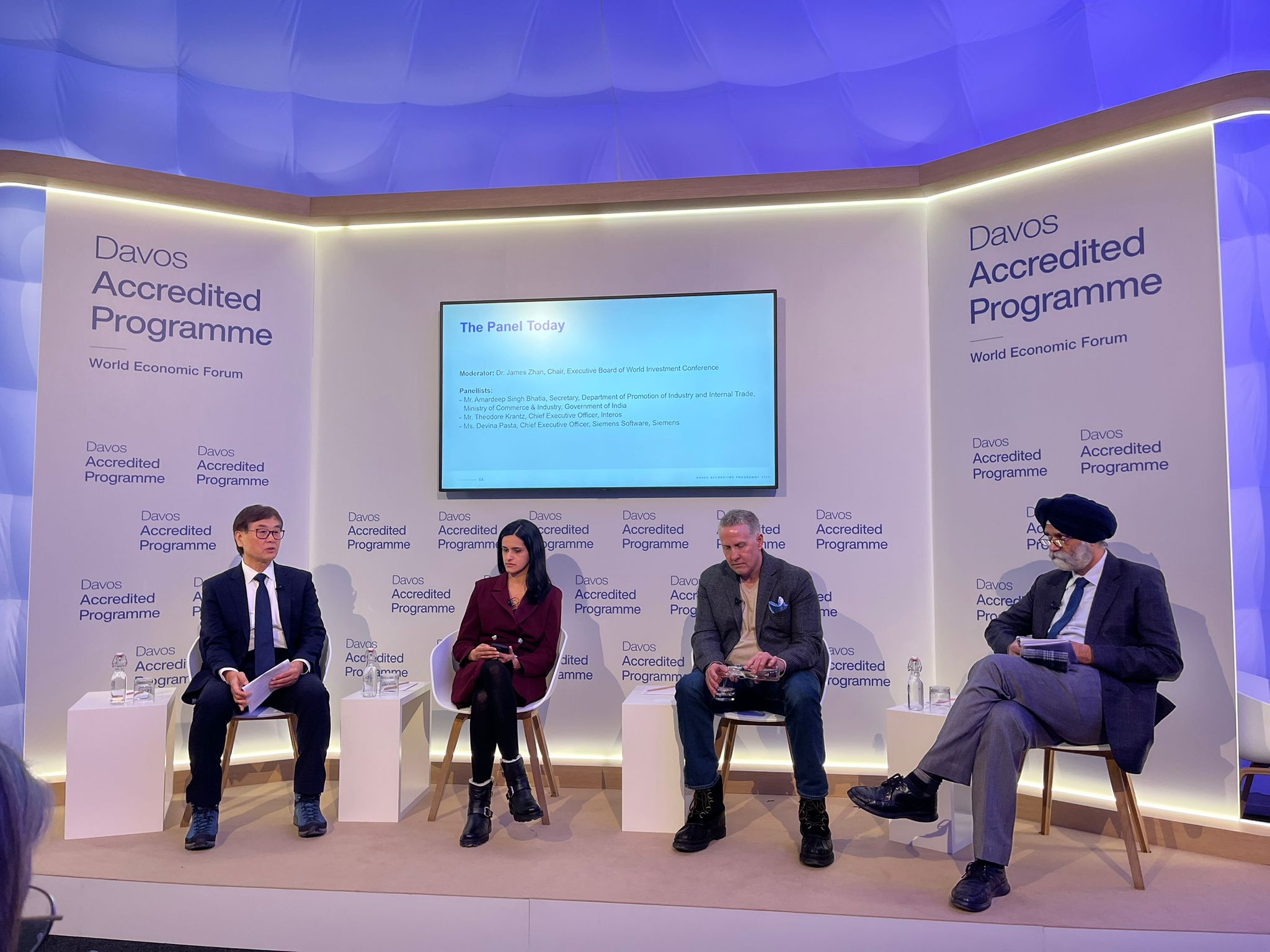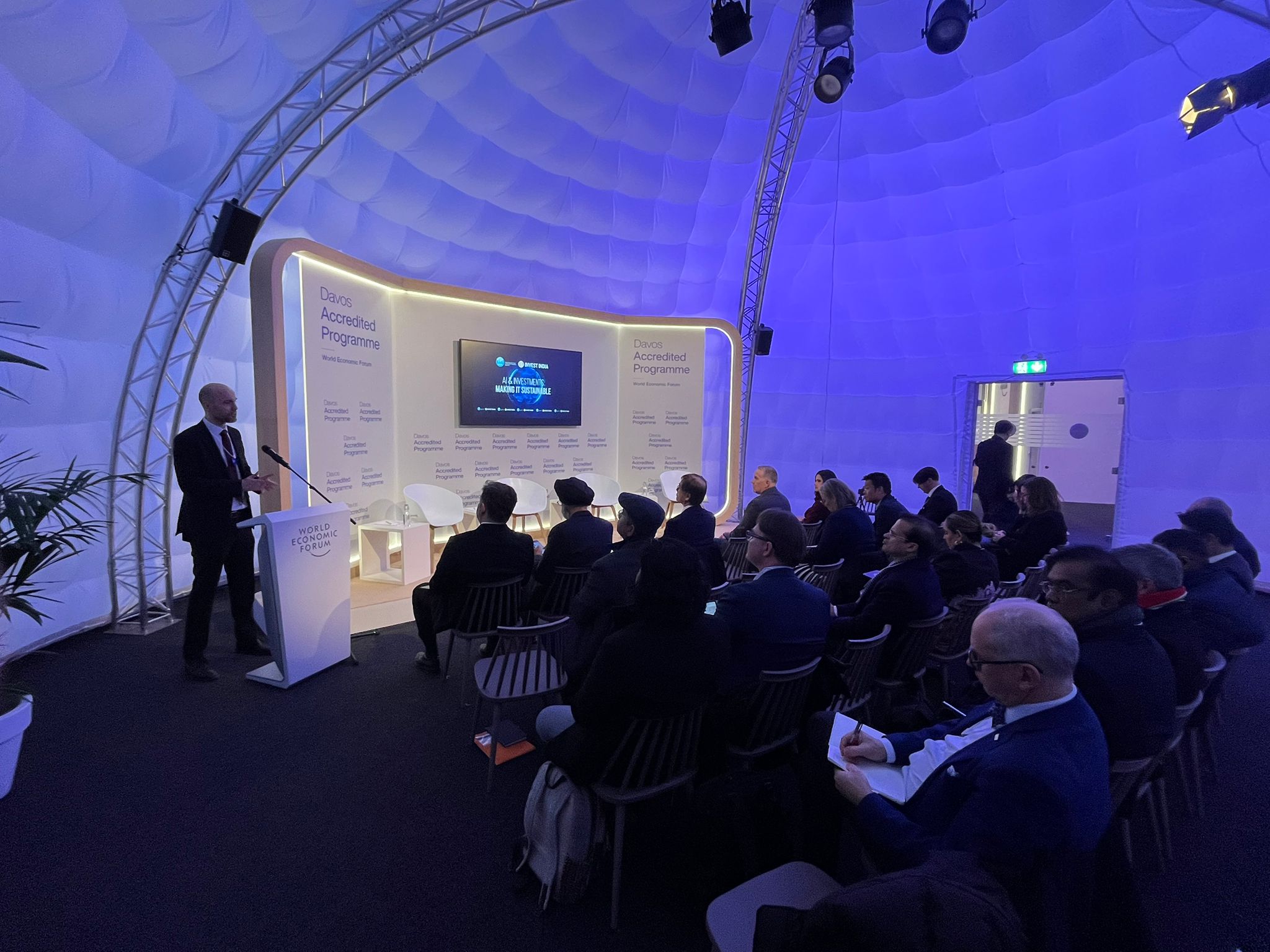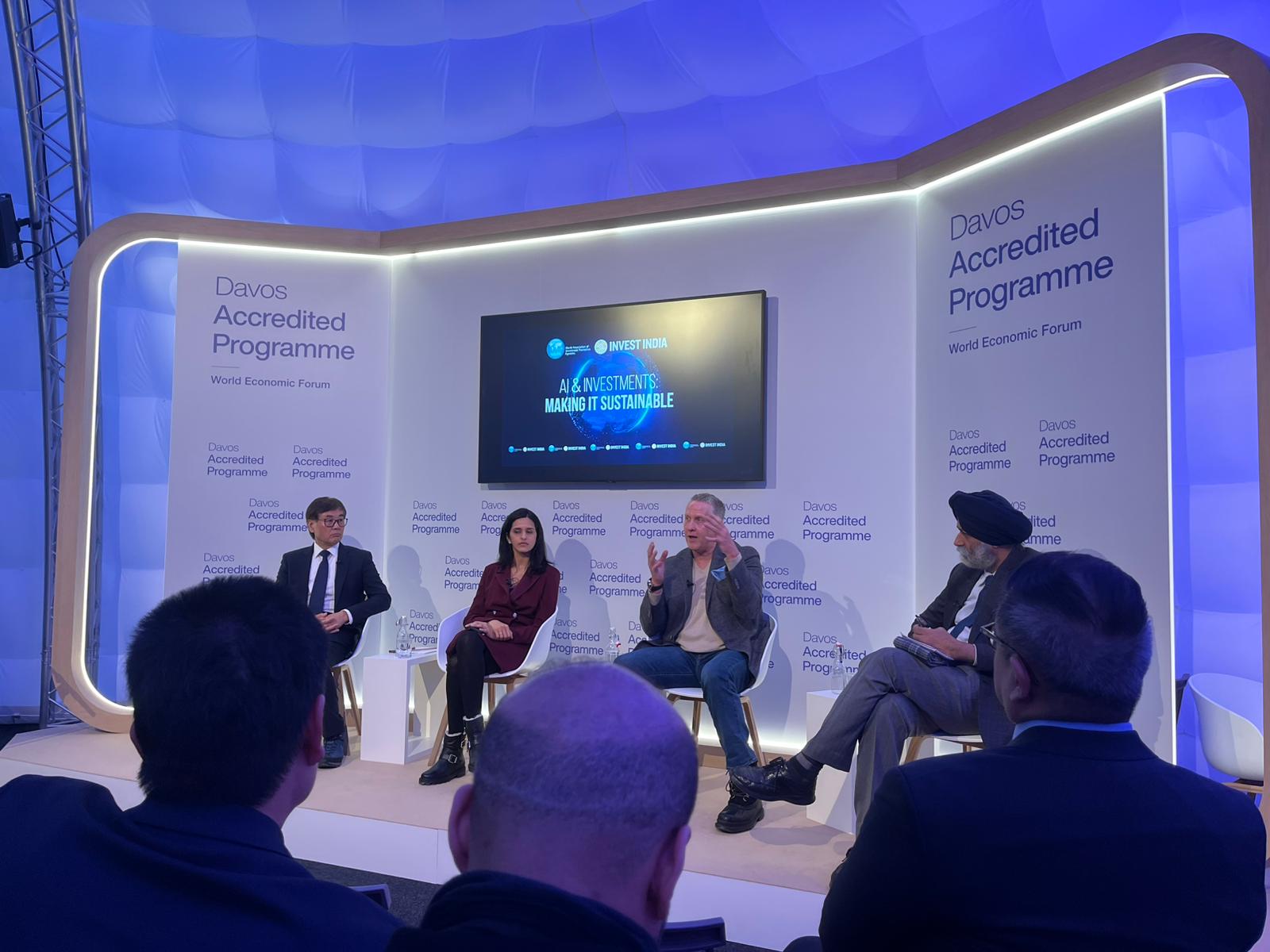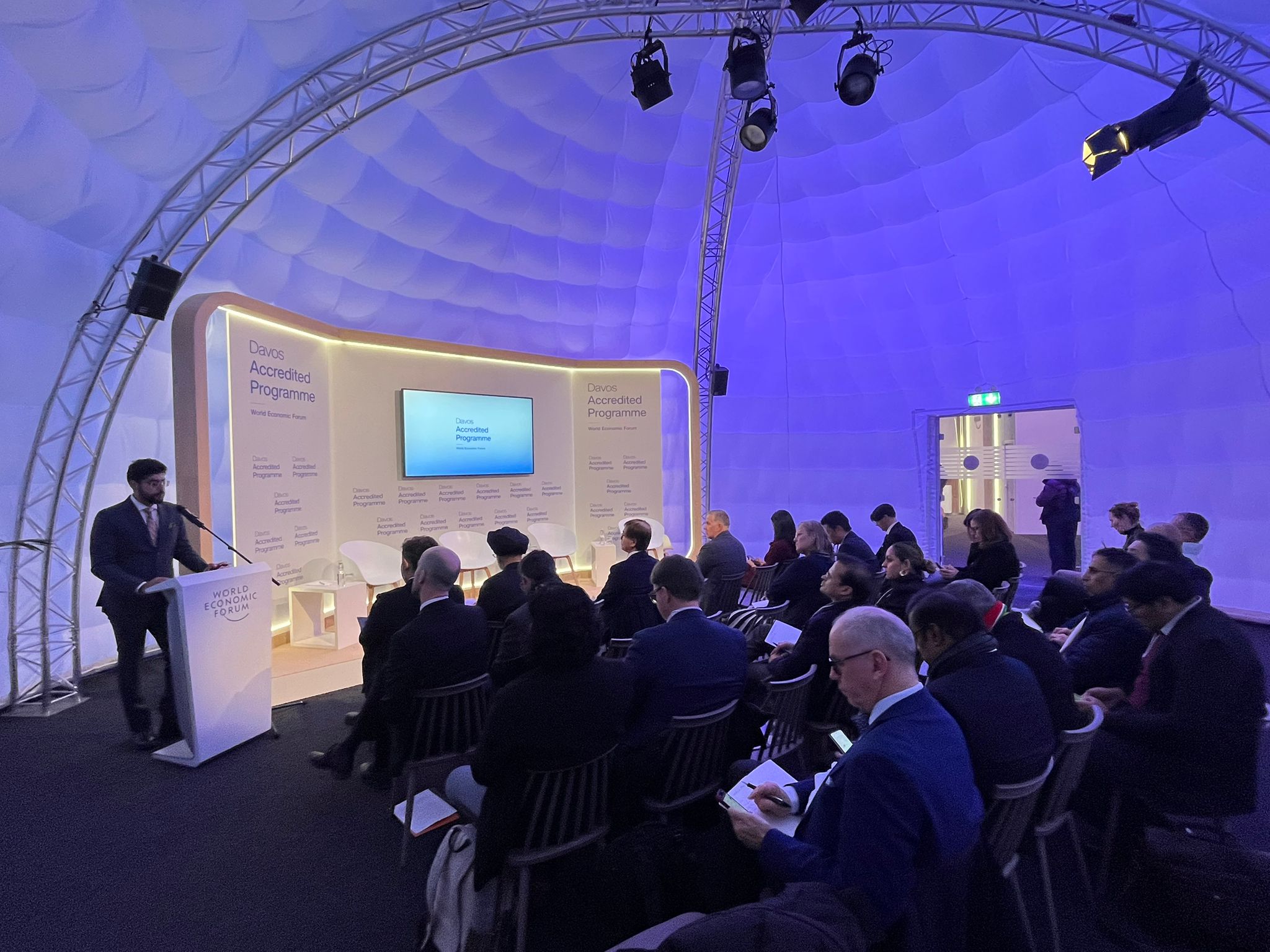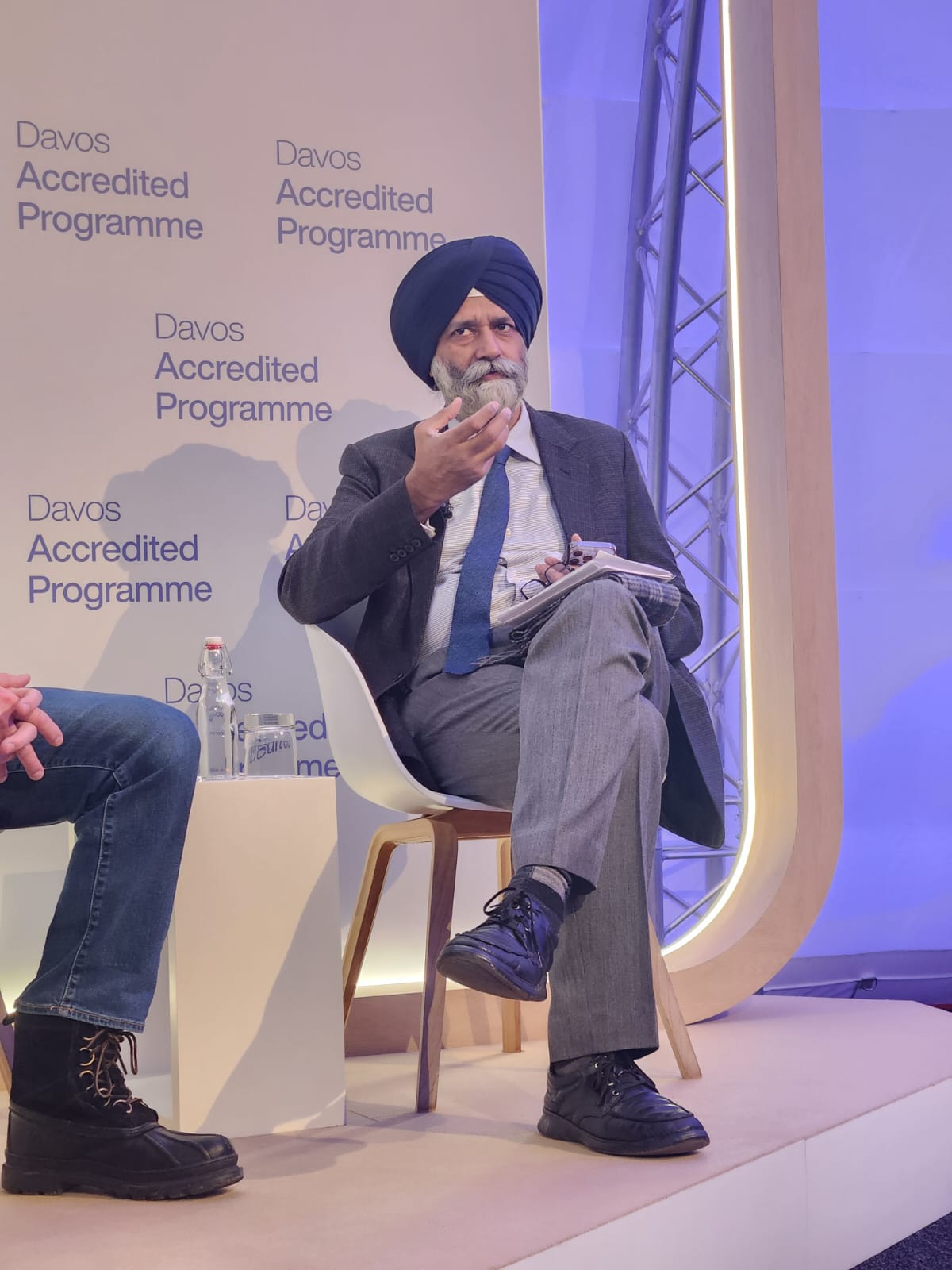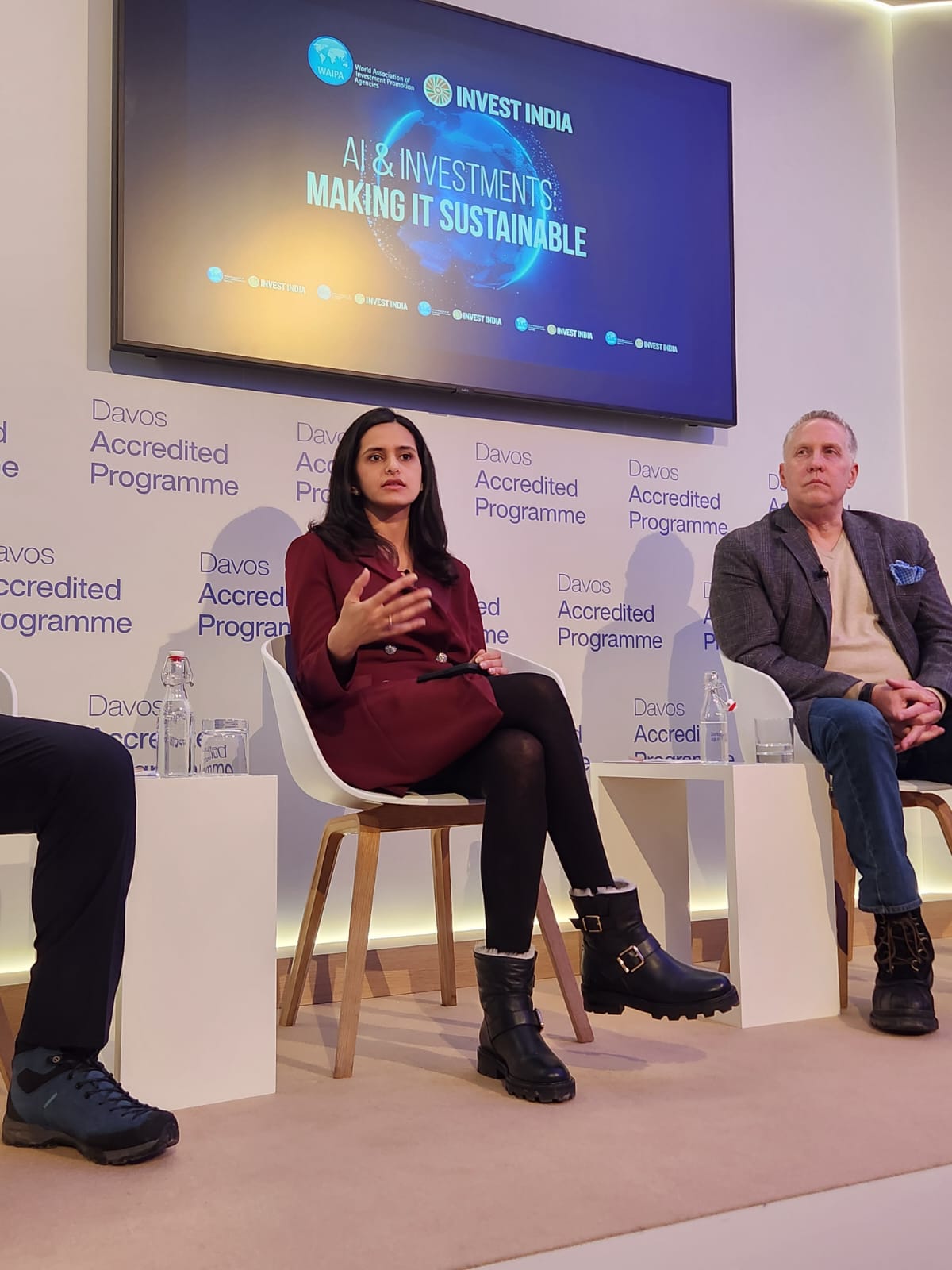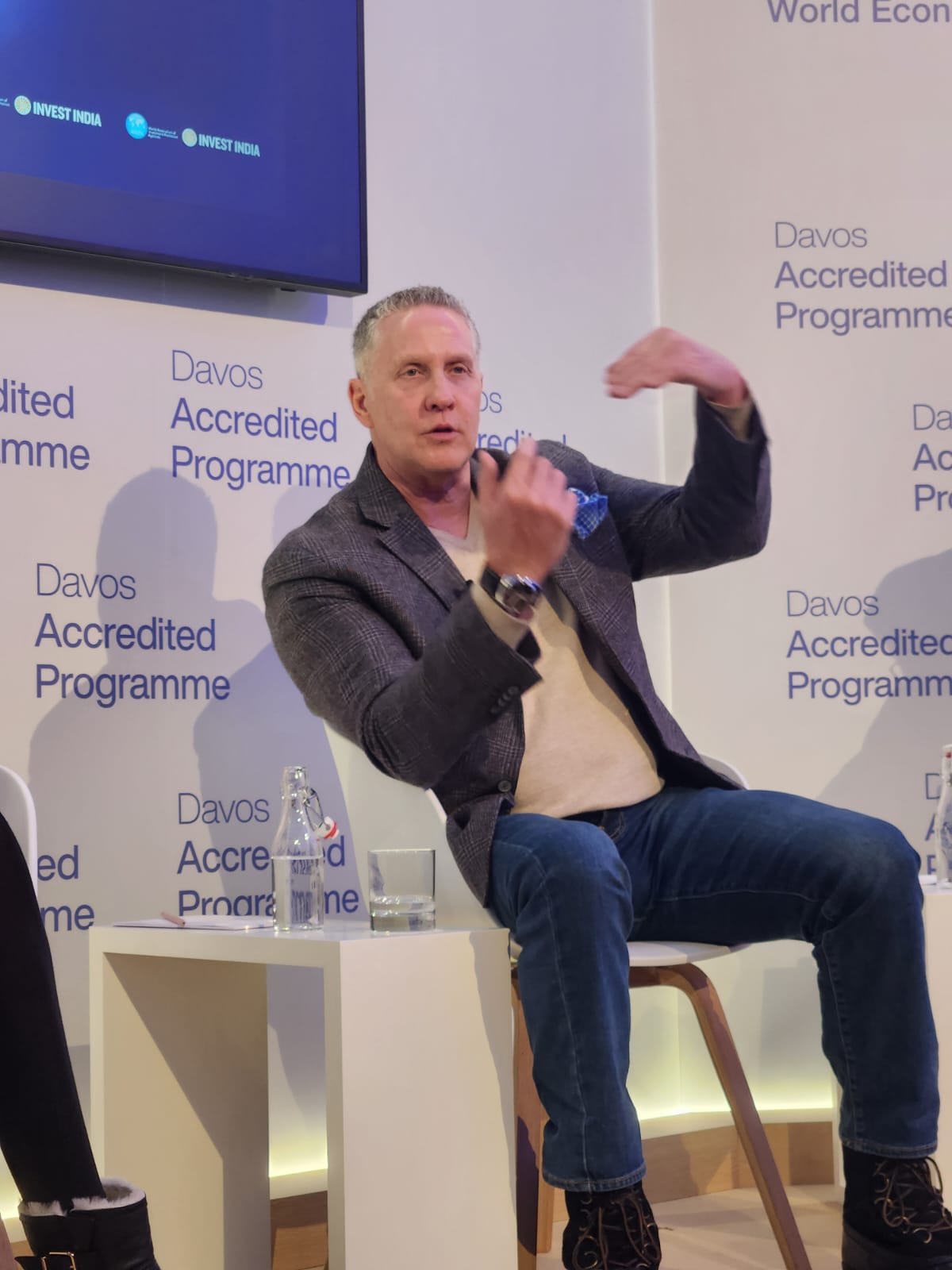This week, nearly 3,000 leaders from over 130 countries gathered at the 2025 World Economic Forum under the theme ‘Collaboration for the Intelligent Age’ to address global challenges and opportunities in the evolving digital era. The forum’s focus on collaboration and innovation provided the perfect backdrop for WAIPA and Invest India’s thought-provoking session, “AI & Investments: Making it Sustainable.”
The Session: Driving Conversations on AI and Sustainability
Moderated by Dr. James Zhan, Chairman of the WIC Executive Board, the session brought together distinguished leaders and experts:
- Mr. Ismail Ersahin, Executive Director & CEO, World Association of Investment Promotion Agencies (WAIPA)
- Mr. Sean Doherty, Head of International Trade and Investment, and Member of the Executive Committee, World Economic Forum (WEF)
- Mr. Vikrant Khazanchi, Head of Emerging & Deep Tech Sectors, Invest India
- Mr. Amardeep Singh Bhatia, Secretary, Department for Promotion of Industry and Internal Trade, Ministry of Commerce & Industry of India
- Mr. Theodore Krantz Jr., Chief Executive Officer, interos.ai
- Ms. Devina Pasta, Chief Executive Officer, Siemens Software, Siemens
The panel delved into how artificial intelligence (AI) can revolutionize investment strategies while driving sustainability and global competitiveness. This session explored the intersection of technology and sustainability, offering actionable insights for investment promotion agencies and global businesses alike.
Key Takeaways: Two Complementary Approaches to AI and Investments
The discussions identified two distinct yet complementary perspectives:
- Investment into AI: Supporting innovation in industries like healthcare, banking, transportation, and logistics.
- Using AI to Facilitate Investment: Enhancing investment promotion strategies and addressing potential challenges predictively.
AI’s transformative potential was underscored with real-world use cases:
- Fuel Efficiency: Airlines using AI have achieved up to 50% savings in fuel consumption.
- Water Management: Optimizing water use and reducing losses through AI-powered early detection systems.
- Construction: Virtual AI models are cutting costs and time in the construction industry.
From Reactive to Predictive Investments
One of the most profound insights was the shift from reactive to predictive AI investments. By proactively addressing challenges, AI can help eliminate risks at their root, fostering resilience and sustainable development. Predictive AI holds the key to a more efficient and forward-looking global investment ecosystem.
AI as a Catalyst for Sustainable Development Goals
While AI’s potential is immense, the energy demands of data centers pose significant challenges. However, using AI to optimize energy consumption presents a unique opportunity to align technology with the Sustainable Development Goals (SDGs).
Five Action Points for AI-Driven Investment and Sustainability
To harness the full potential of AI, the session emphasized the need for:
- International cooperation on AI governance (e.g., Hiroshima AI Process).
- Strengthening ICT infrastructure worldwide.
- Public-private collaboration in R&D and innovation.
- Enhancing data cleaning and integrity.
- Reskilling the workforce for the AI era.
A Future-Shaping Event
The discussions at Davos this year reaffirmed the transformative role of AI in shaping sustainable investment strategies. As WAIPA’s Executive Director, Mr. Ismail Ersahin, highlighted, “Collaboration and innovation are critical to leveraging AI’s potential for systemic development and inclusiveness.”
With world leaders and experts contributing their insights, the forum’s focus on AI and sustainability has set the stage for a future where technology drives equitable and sustainable growth. The insights from this session will be further detailed in a comprehensive report, providing actionable strategies for investment promotion agencies and stakeholders worldwide.
Stay tuned as WAIPA continues to lead conversations on how investment and technology can intersect to shape a better, more sustainable future.


